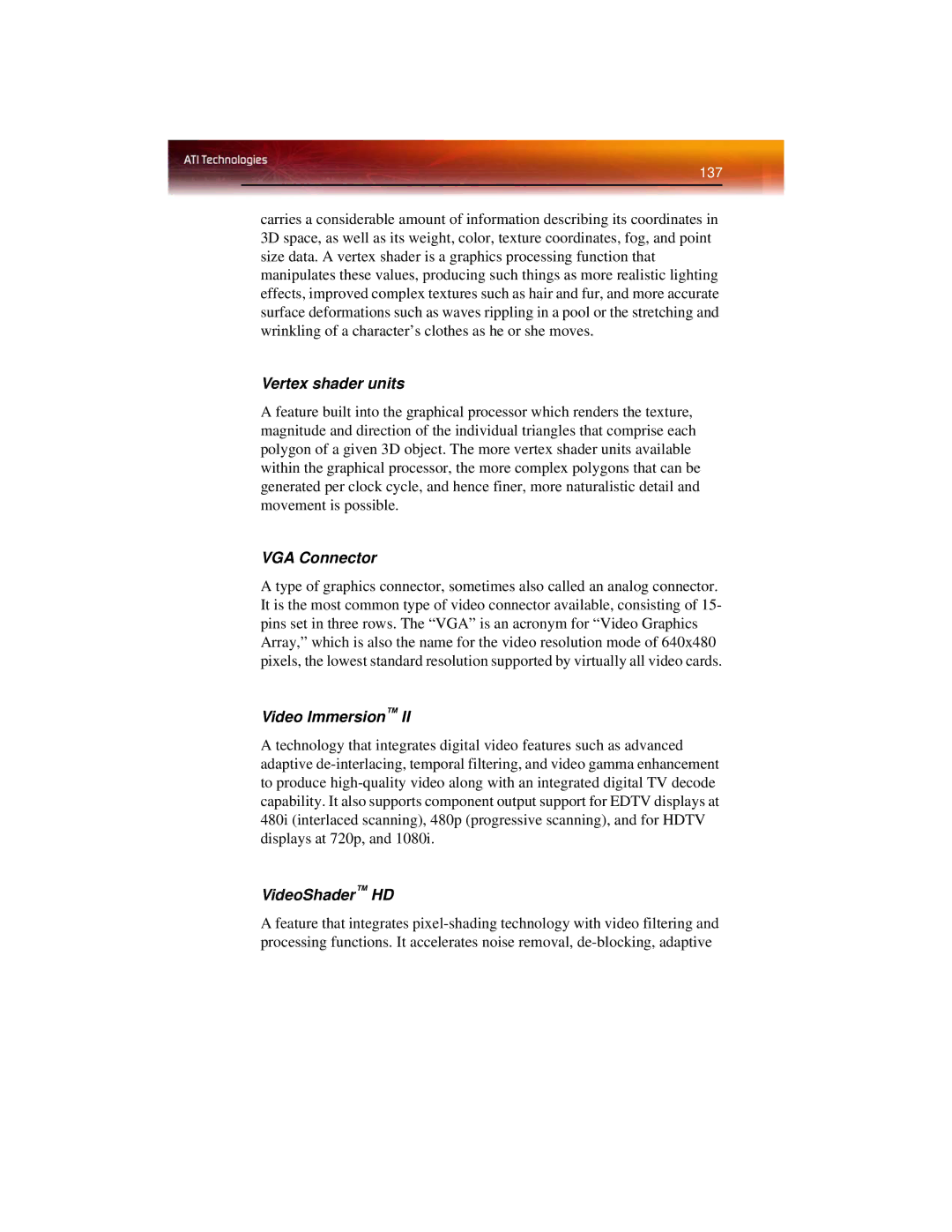
137
carries a considerable amount of information describing its coordinates in 3D space, as well as its weight, color, texture coordinates, fog, and point size data. A vertex shader is a graphics processing function that manipulates these values, producing such things as more realistic lighting effects, improved complex textures such as hair and fur, and more accurate surface deformations such as waves rippling in a pool or the stretching and wrinkling of a character’s clothes as he or she moves.
Vertex shader units
A feature built into the graphical processor which renders the texture, magnitude and direction of the individual triangles that comprise each polygon of a given 3D object. The more vertex shader units available within the graphical processor, the more complex polygons that can be generated per clock cycle, and hence finer, more naturalistic detail and movement is possible.
VGA Connector
A type of graphics connector, sometimes also called an analog connector. It is the most common type of video connector available, consisting of 15- pins set in three rows. The “VGA” is an acronym for “Video Graphics Array,” which is also the name for the video resolution mode of 640x480 pixels, the lowest standard resolution supported by virtually all video cards.
Video Immersion™ II
A technology that integrates digital video features such as advanced adaptive
VideoShader™ HD
A feature that integrates
